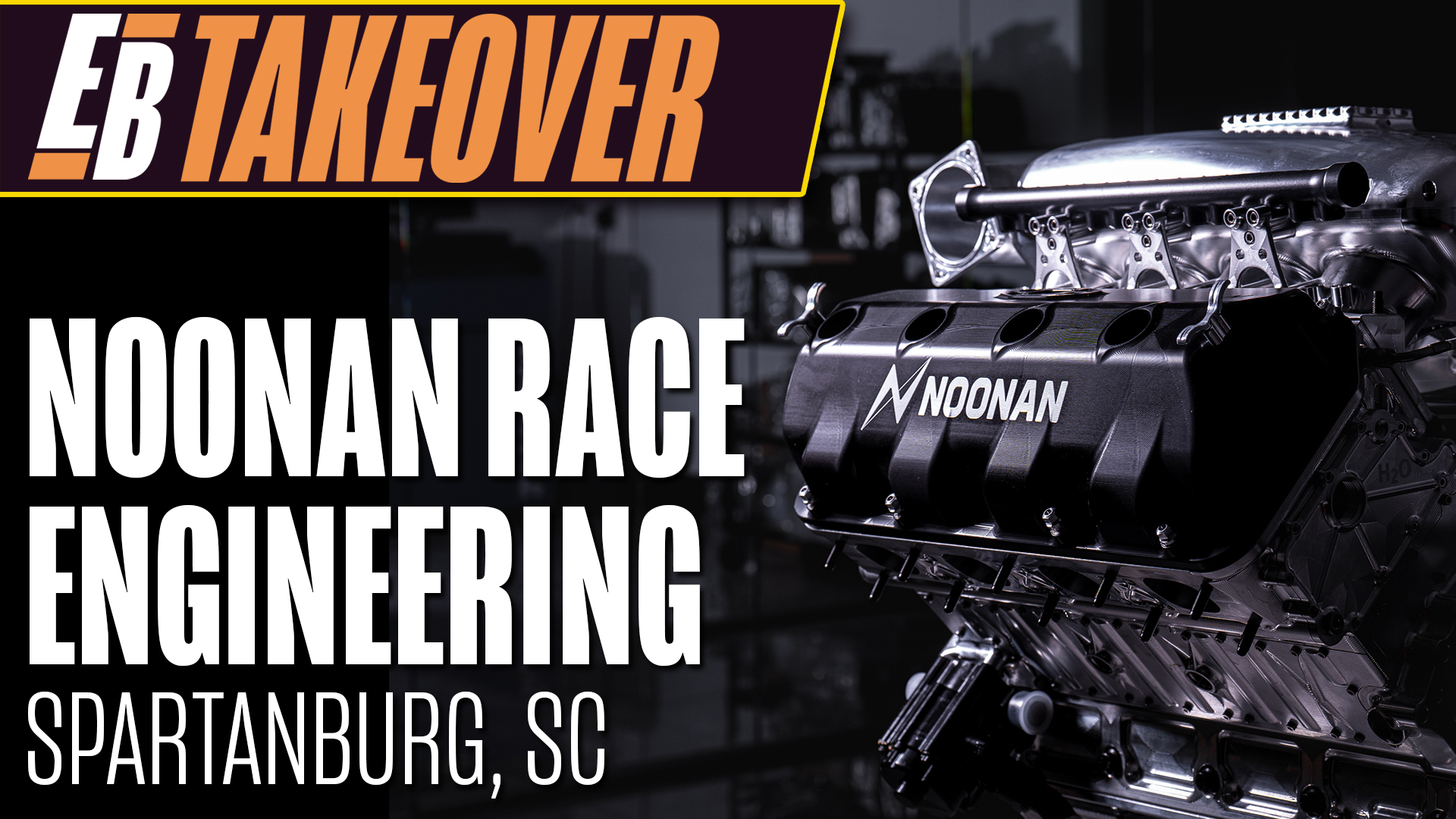Why Building Successful Trophy Truck Engines is so Damn Hard
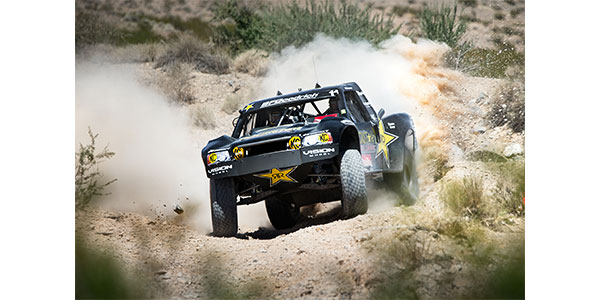
Ten years ago, building an offshore powerboat engine was considered the most demanding job ever; Hands down. The combination of weight and size and the boat bouncing over waves causing the props to lunge in and out of the ocean, made for one tough customer. Until now.
Twenty-four-hour endurance racing engines are another difficult build due to the high rpms and the durability needed to survive a long period of time. However, each of those applications pale in comparison to what an off-road trophy truck engine has to endure.
“The trophy truck market is the hardest market I’ve ever been involved with,” says Kevin Kroyer, owner of Kroyer Racing Engines. “There’s a lot of parts we can break in trophy trucks that people say they can get away with in drag racing, mud racing, monster trucks, etc. When you take one of these trucks that are 6,500 to 7,000 lbs. and you start them up in Ensenada one day and turn them off 24 hours later in La Paz or Cabo San Lucas – where they’ve run for well over 1,000 miles from low temps to high temps, and they’re constantly trying to ingest dirt – there are many pitfalls to that kind of terrain.”
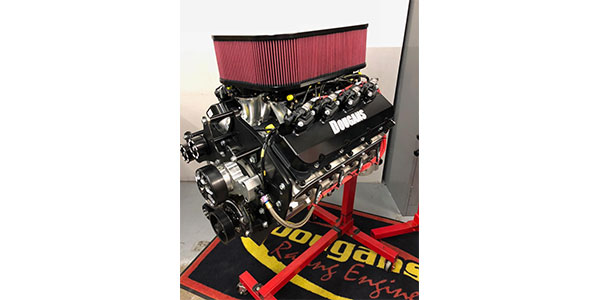
Engine builders who do business in the Trophy Truck arena must have things pretty well figured out in order to build an engine that can live and last in this environment. That’s just to finish a race. You’ve got to be at another level to win a race!
“Those off-road vehicles are heavy, and they use 800-900 horsepower engines with 40-inch tires all while going over washboard roads with ruts that are four-feet deep and can last for a 30-40-mile stretch,” says Jeff Ginter, owner of Jeff Ginter Racing Engines. “And that’s not even usually the worst of it. For that engine to accelerate the weight of the vehicle and turn the diameter of those tires – with the constant loading and unloading of the suspension, tire and wheel – isn’t for the faint of heart, that’s for sure.”
With long run times at max effort over dirty, rough terrain in a heavy vehicle that does more bad than good, these engines must be built to take a punishment.
“Nothing in this industry puts the amount of abuse on an engine that off-road racing does,” says Ray Field, owner of Dougans Racing Engines. “The loading and unloading that happens in an off-road vehicle is the most difficult part of these engines. Every time it loads and unloads, the pistons and rods are trying to stretch apart from each other. It’s trying to break the pistons, pins, connecting rods, bolts and crankshaft. The timing components are under extreme stress as well from the constant loading and releasing.”
Due to these circumstances, engine builders must pay attention to every detail of the engine and vehicle, and there’s no such thing as too many custom components to enable these engines to function well enough for a win.
“The off-road stuff has to be stronger and more resilient than any other form of racing,” Field says. “That is what turns me on about it. It’s the small details that make the difference.”
Racing Series
There are several prominent off-road racing series, and they’re more or less equally tough. Some of the more popular series are SCORE International, which races in Mexico and is known for iconic events suche as the Baja 500 and Baja 1000, the Best in the Desert series (BITD), which races on the U.S. soil, and the Lucas Oil Off-Road racing series. All of these offer up different kinds of obstacles and tough racing environments for these engines – and vehicles – to endure.
“The Baja 1000 and Baja 500 are long and storied,” Kroyer says. “The San Felipe 250, which was actually a 350-mile race this year, is notoriously rough, and we ran part of that course for part of the Baja 500. The Best in the Desert races have their own challenges here in the States. The longest point-to-point race in the United States is the Vegas to Reno race. It’s typically 550-miles long and doesn’t allow racers to pre-run the course.
“In Mexico, you can pre-run for weeks in advance and know where the course goes. Here in the States they might have a guided pre-run where you do it at a slower mph or no pre-run whatsoever. There’s also differences from the driver and team standpoint and some of the pitting aspects. The engines and vehicles are pretty much the same, unless you get into the Lucas Oil Short Course stuff, then the vehicles look similar, but they’re completely different.”
During races, a majority of engine builders are on hand to offer race support to the teams using their engines. Obviously, the hope is they don’t need to work on engines during the race, but anything can happen.
“We take a minimum of two people, and we’ve had as many as seven people down at a Baja 1000 that we will embed with teams,” Kroyer says. “We’ll go down a couple of days before the event starts. By that point, all of the engines have been built at the shop and dyno tuned. They’ve been installed in the race vehicles and we run them across the chassis dyno. The vehicles have all typically tested at that point, so we collect engine dyno and chassis dyno data and figure out if anything’s going on.
“When we go down to the race, we’ll spend a couple of days before the race just making sure that nobody’s got any issues, any last minute problems and doing some fine tuning. In the Mexico races, they have speed limit zones, so we control the speed limits with our MoTec engine management system. You might fine tune some speed limits or take care of a few last minute issues.”
On race day, the engine builders typically embed with certain teams and are out on the race course in case anything goes wrong.
“We’ll just fix it as it comes,” he says. “It’s really hard for people outside the off-road industry, especially doing trophy trucks, to understand how hard that stuff is on equipment.”
Common Failures
When you’re talking about the race conditions these engines are experiencing, it’s no surprise that trophy truck engine builders have literally seen everything. The pace at which the top five to top 10 trucks run is far more aggressive these days. While at the same time the courses are getting rougher and the amount of money and effort being spent to prepare for these races is vastly increasing. Two areas of key importance are the valvetrain components and the electronics.
“The valvetrain is very critical because there’s no checking springs or spring changes, and no valve lashes,” Field says. “It just has to go. They will hold these engines wide open on a dry lake bed as long as it takes. If the dry lake bed was 20-miles long, it would be floored for 20 miles. The engine has to accelerate properly, idle well, never die, and run at high speed for a long period of time without hurting the engine.”
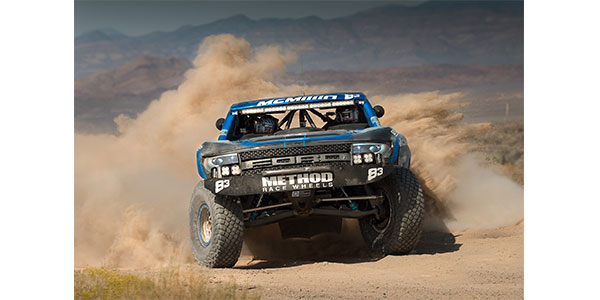
The valvetrain components Dougans Racing Engines uses in these engine builds have been chosen over years and years of success and failure. The shop mixed the pot trying several new components until they found the parts that worked.
Electronics are also a huge component related to the engine programs, and the demands on these parts are intense.
“Try to name any other series where you need two, 200-amp alternators because in running condition at nighttime racers are using somewhere between 10 and 20 lights that draw huge amounts of amperage,” he says. “It’s not uncommon to see 160 to 200 amps draw. Electronics also may see a lot of water due to an average of five water crossings per race. Racers may also heat soak the engine during stops where air temperatures rise and electronic components see a very high temperature. As soon as the vehicle is fixed, they take back off and expect extreme performance from the time they go.”
ECU systems are another very important part of these engines, and there are a multitude of ways to configure the computer for this type of racing.
“We use all MoTec components, and all these components have what we call a custom build or license package that allows us to write our programs to monitor and adjust the engine any way you want,” Field says.
Of course, dirt ingestion is a natural part of off-road racing that builders need to account for, and engines need to run for a long period of time without burning too much oil while remaining cool enough for optimum power.
“One of the challenges of today’s trophy trucks is that you only get so many square inches of area for the radiator and we’re continuing to increase tire size, shock diameters, suspension components and horsepower levels at a rapid rate,” he says. “Therefore, cooling needs to keep up with everything.”
Common failures can also occur if the engine builder has put more thought into horsepower than the longevity of the engine. To finish first, first you must finish, is the common mantra.
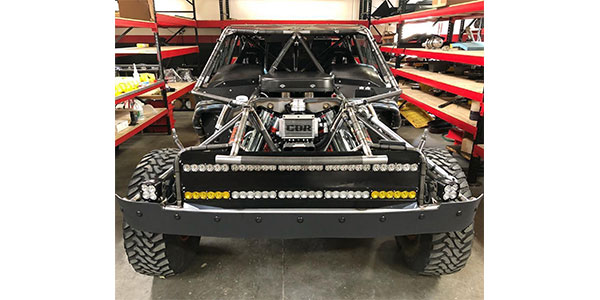
This is an LS trophy truck engine built by Jeff Ginter Racing Engines.
“Since we specialize in higher horsepower, endurance-based engines, we’re always searching for horsepower, but we’re not going to sacrifice 10 or 15 horsepower if we think it’s going to cause us durability issues,” Ginter says. “These things have to go for hundreds of miles in the most demanding and abusive environments you can imagine.”
Keys to Successful Engines
In off-road racing, there’s no one engine fits all. Many engine builders utilize a variety of different engines depending upon the series and the customer.
“For our trophy truck customers, we’re probably equally split among a GM-based standard bore center or spread bore center block with a plenum manifold throttle body on it, or a Ford standard bore center 455 cid with a Kinsler 8-stack efi system on it,” Kroyer says. As far as individual parts, we’re dealing with some of the best vendors we can find. We also spend a fair amount of our own time QCing even the good vendors’ stuff because of the amount of time and distance that are on these engines.”
Some engine builders, like Dougans Racing Engines, rely on custom components for engines, electronics and all accessories. After all, it’s the all in the recipe of components that can make or break whether you’re going to build a winning combination or not.
“Our blocks are made custom to our specifications,” Field says. “Our crankshafts have been strengthened in areas we have found to be weaknesses and those are custom parts. The connecting rods we use are designed custom to meet all of our needs. Pistons are a constant evolution. We use custom pin diameters, pin lengths, lock types, oiling configurations, ring groove clearances, compression, the shape of the dish or dome, valve pocket locations – it’s a constant development on pistons that never stops.
“The cylinder heads we use have our own port program. We install all of our own valve guides and valve seats in our latest big block programs and we complete all of that in-house. We use a wide mixture of valve train components – COMP Cams, Isky, Manton, T&D, Manley, and Xceldyne. Everything is custom.”
While anybody can buy the parts found in these engines, it’s those custom touches, quality control checks, modifications, and the finish machining that separate winners from losers. In addition to the components, these engines have to be tuned properly to perform their best.
“The power band has to be very broad,” Kroyer says. “These races are typically somewhere in the 60-mph average, but there’s times where your truck could be doing 140 mph across a dry lake bed or down a pole line road, and then there’s other times where you’re just crawling through the rocks. The relationship of horsepower to torque in a lot of racing is all about the horsepower, but torque is really what moves the vehicle forward. When you’re talking about a 6,500-lb. truck with a 40-inch-tall tire, it’s torque that’s going to make that thing move.
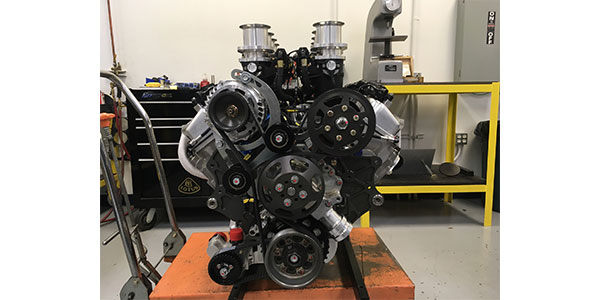
“So you build the broadest torque band you possibly can, especially if you’re running what the majority of the market is running, which is a three-speed, manual shift, automatic transmission based on an old GM Turbo 400 design. There are some guys who are building some trucks with some multi-speed gearboxes and they may be making their power curve a little bit differently, but ultimately it’s torque that pushes these big, heavy vehicles and their big, tall tires through the soft sand.”
After the hundreds, and in some cases, thousands of miles of racing and the many hours of engine development, the most important aspect of building a trophy truck engine is watching your efforts translate into a win and your customer celebrating atop the podium.










